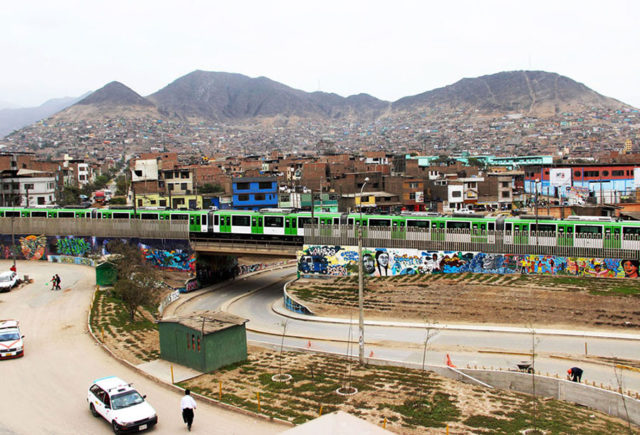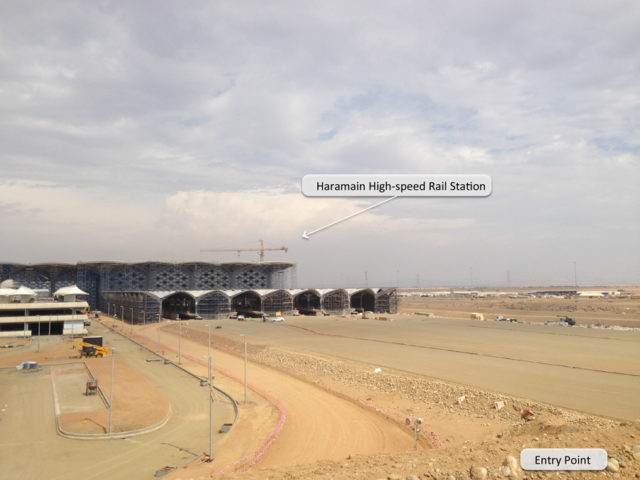Developing Sustainable Infrastructure in New Cities
December 17, 2014 — Blog
Several years ago, the Institute for Sustainable Infrastructure and the Zofnass Program for Sustainable Infrastructure at the Harvard University Graduate School of Design partnered to create the Envision Sustainability Rating System. This pioneering rating system considers how infrastructure performs in terms of sustainability, and also in terms of durability, flexibility and utility of the proposed work. It is a new accreditation system that prioritizes the sustainability of infrastructure, such as roads, bridges, pipelines, stormwater systems, landfills, treatment and other systems that help cities function as a whole. Today the world realizes that economic-driven development cannot sustain further without considering urban challenges such as rising energy prices, water shortages, traffic congestions, urban sprawl, flood damages, and destruction of roads and bridges.
The improvement in performance and resiliency of infrastructure is needed to adapt to the 21st century’s extreme urban context. In addition, a sustainable and efficient infrastructure development is a key component of national competitiveness, to connect and integrate cities to better serve their citizens. Infrastructure should account for enhancing the quality of life of communities while allocating energy resources and considering the natural environment and climate change. Understanding these factors is very important in determining how infrastructure can contribute positively to the community it is supposed to serve.

Having recently moved to Saudi Arabia for the Impact King Abdullah Economic City (KAEC) Fellowship, I hope to provide a holistic vision for sustainable infrastructural development in this new city – a vision that focuses on the performance of infrastructure as well as on the economic, social and environmental challenges, and the complex impact that infrastructure can have on a community.
With the assistance of local organizations, business units within the city and the Harvard Zofnass program, I will focus on the assessment of KAEC’s sustainable infrastructure, particularly its major roads, using the Envision Certification process. I’m excited to be able to address what I believe is one of the key challenges of urbanization this century: the role of infrastructure sustainability in the context of rapid urban growth, especially in new cities.
Through the Envision rating system, highway developments and many other progressive infrastructural developments have been evaluated and awarded the Infrastructure 360° award, the first private sector infrastructure sustainability award in Latin America and the Caribbean. Nuevo Necaxa-Ávila Camacho Highway in Mexico, a major highway was constructed integrating sustainable techniques such as slope re-vegetation programs, hillside stabilization schemes, worker education and vaccination and school outreach programs.

https://www.ica.com.mx/autopista-mexico-tuxpan
Furthermore, Highways Vias Nuevas De Lima in Peru also achieved tangible social benefits. Highways constructed under its guidelines have given rise to neighborhood hubs that allow streamlined pedestrian, private, and public transportation integration, established educational workshops for the employees and community at large and promoted and invested in the creation of economically and environmentally sustainable local businesses.

Within KAEC, the Envision review can provide an objective framework to guide complex infrastructure development. During the Fellowship, I aim to provide an Envision evaluation on a major planned road that is expected to be a main entry point and arterial road in King Abdullah Economic City. Through a single road I believe that a sustainable infrastructure can evolve to lay the groundwork for a broader sustainability platform that will serve communities for generations to come.


KAEC, located on the Red Sea coast of Saudi Arabia, is the largest private sector development in the region and a planned major economic, transportation, and logistics hub in the metropolitan Jeddah region. The city is already strategically located in an accessible area, approximately an hour and 20 minutes away from the holy Islamic city of Mecca, three hours from Medina by car and an hour away from all Middle Eastern capital cities by plane. With the development of a new sea port with a 20 million Twenty-foot Equivalent Unit (TEU) capacity, or four and a half times greater than the Port of Jeddah, KAEC is expected to boost the light industry sector (e.g. automotive manufacturing, food, pharmaceutical and energy), and provide homes for two million people by 2020.
Faced with this expected high growth, a robust strategy for sustainable road development must be considered. The Impact KAEC Fellowship will be an opportunity to conduct a careful and thorough evaluation for a project that will benefit KAEC’s major infrastructure development in a sustainable way.
How do we provide an overarching vision for sustainable infrastructure in such a complex urban context where the economic, social, and environmental effects on a community should be considered, as well as the development’s full lifetime planning? How can we ensure that both governments and the private sector agree on a broad definition of sustainability, and that they are equipped to measure and evaluate it?
Whether it’s global warming, natural disasters, the conservation of resources such as water and energy due to exponential population growth, infrastructure today is on the front line of some of the major challenges of our century. If we get it right, it has the potential to connect and unite communities rather than segregate and displace them. The questions Envision hopes to answer are not only whether the project will be done correctly, but also whether the correct project will be done. I hope that this project will determine the right path forward for KAEC’s major roads. As an Impact KAEC Fellow, I will have the opportunity to explore the intersection of sustainability, infrastructure investment and growth, and hope to positively influence the ongoing investment strategies not only for KAEC, but for new cities all over the world.